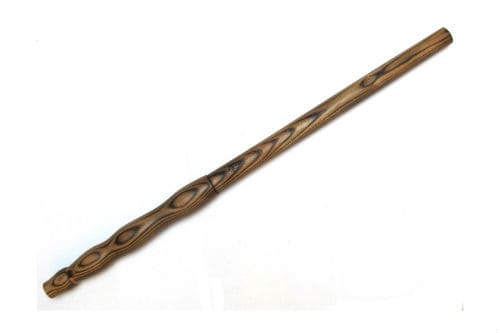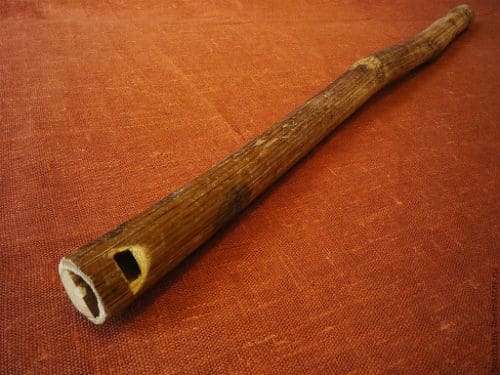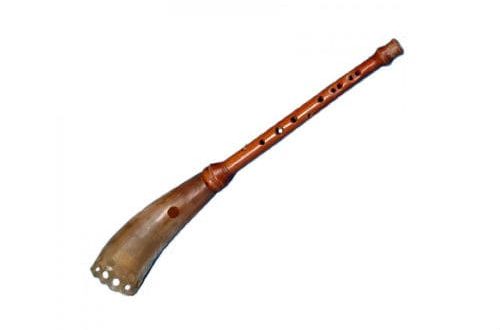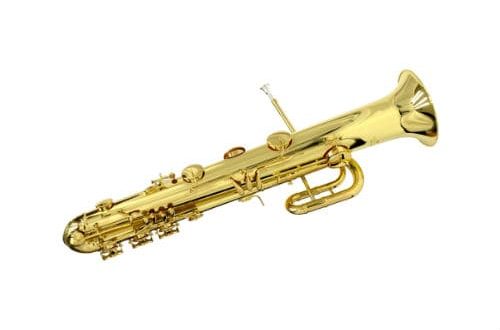
Kalyuka: instrument design, sound, history, playing technique, varieties
The wind musical instrument kalyuk has many names: overtone flute, herbal pipe, distillation, and this is not a complete list. Kalyuka was common among almost all European peoples, it was a cylinder with holes, hollow from the inside, made from solid stems of plants (hogweed, angelica, tartar).
Design and manufacture
The design of the instrument is extremely simple; in the old days, any peasant could make a herbal pipe. The dried stem of the plant had 2 holes: the top one, for blowing in air, the bottom one, for blowing out. To extract the sound of the flute, near the top there was another additional hole, called the muzzle (whistle).
An important point was the selection of the size of the kalyuki. The musician’s physique, his height served as a guideline. Children’s specimens on average did not exceed 30 cm, adults could reach 85 cm. It was believed that, ideally, the performer should reach the bottom hole with his fingers. Therefore, when making a model, we took as a basis the distance from the shoulder to the tip of the fingers.
From the inside, the case had the shape of a cone: wider at the top than at the bottom (the difference is about 1 cm).

Initially, the folk instrument was made only from plants. Dried stems served as the material:
- piper;
- prickly tartar;
- hogweed;
- motherwort;
- pumpkin.
Later, they began to take a tree as a basis – in particular, a bast, which was wound around a finger, creating a hollow cone.
Kalyuka was considered a seasonal instrument: it was not difficult to manufacture, natural material served as the material. It could be thrown away immediately after use, it was not stored for a long time.
Manufacturing rules:
- When using the stalk of the tartar as a base, the spikes were cut off from it, the membranes were pierced inside, making sure that there were no punctures on the body.
- The workpiece was checked for integrity: the places where it passed air were smeared with bread crumb.
- The upper part should be thicker than the lower, so the lower part of the plant was cut off: the stem is more fleshy at the roots.
- For the inlet, a strictly transverse cut was made. For a whistle (muzzle) – a cut at an angle of 45 °.
History of origin
The exact period of the appearance of the herbal pipe is unknown, presumably, it existed in Ancient Russia, and was common among rural residents. The instrument was intended for men, the Play was accompanied by songs, dances, any holidays, festivities.

The first studies and documentary description of the Russian folk instrument date back to 1980. At that time, several old-timers of the villages, located between Belgorod and Voronezh, owned the Play on the spike. From their stories, it became known that at the beginning of the XNUMXth century, this model was popular and widespread among the villagers.
Professional musicians gave the ancient instrument a scientific name – the overtone flute. Today she is a full member of many ensembles performing Russian folk music.
Play technique
Sounds are produced when the performer closes and opens a hole in the bottom of the case. The main technique of the Play is overblowing. The musician directs a jet of air into the upper hole, opening and closing the lower one in time with the rhythm of the melody.
In terms of sound, the capabilities of the kalyuk are quite modest: the masters of playing this instrument complement the performance with fervent shouts.

Varieties
Kalyuks are distinguished by the material that makes up their basis:
- bast;
- puddle (disposable);
- prickly (valued more than others, were a sign of prosperity).
Varieties of Kaluki can be found in most European countries, only the name changes: selfeit, selpipa (Sweden), payupilli (Finland), selefleita (Norway).
The following models are considered the most common:
- Willow flute – material of manufacture: willow bark, sometimes other types of wood (alder, mountain ash, ash). Place of distribution – Scandinavian countries.
- Tilinka is a folk instrument of Romania, Moldova, Ukraine of medium size (30-60 cm).
- The ending is a Slovak variety. The body length reaches 90 cm, holes – 3 cm. Material – hazel. Used mainly by shepherds.
https://youtu.be/_cVHh803qPE





